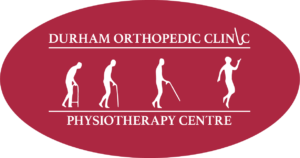In today’s fast-paced world, many of us spend long hours sitting at desks, using computers, or performing repetitive tasks. This modern lifestyle can lead to various musculoskeletal problems, including back pain, neck pain, and repetitive strain injuries. Ergonomics, combined with physiotherapy, offers a solution to these issues by promoting healthier and more efficient ways of working and living.
Understanding Ergonomics
Ergonomics is the science of designing workspaces, tools, and tasks to fit the user’s needs, thereby minimizing the risk of injury and enhancing productivity. Good ergonomic practices can prevent strain on the body and reduce the likelihood of workplace injuries.
Key principles of ergonomics include:
- Proper posture: Ensuring that the spine is aligned and the body is positioned correctly to avoid unnecessary strain.
- Optimal workstation setup: Arranging desks, chairs, and computer equipment to promote a comfortable and efficient working environment.
- Frequent breaks: Encouraging regular breaks to move and stretch, reducing the risk of repetitive strain injuries.
- Appropriate tools: Using tools and equipment that are designed to reduce physical strain and increase comfort.
The Role of Physiotherapy in Ergonomics
Physiotherapy plays a crucial role in implementing and maintaining ergonomic practices. Physiotherapists are experts in human movement and can provide valuable insights into how to optimize work environments and daily activities to prevent injuries.
Here’s how physiotherapy contributes to better ergonomics:
- Assessment and Education: Physiotherapists assess individuals’ workstations and daily activities, identifying potential ergonomic issues. They educate patients on proper posture, correct body mechanics, and effective movement strategies.
- Personalized Exercise Programs: Physiotherapists design customized exercise programs to strengthen muscles, improve flexibility, and enhance overall physical health. These programs often include stretches and exercises that can be done at work to counteract the effects of prolonged sitting or repetitive tasks.
- Injury Prevention and Management: Through ergonomic assessments and targeted interventions, physiotherapists help prevent common workplace injuries such as carpal tunnel syndrome, lower back pain, and neck strain. If injuries do occur, they provide treatment to promote recovery and prevent recurrence.
- Workplace Modifications: Physiotherapists can recommend adjustments to workstations such as the height of chairs and desks, the positioning of monitors, and the use of supportive accessories like ergonomic keyboards and mouse pads.
Practical Tips for Implementing Ergonomics in Daily Life
- Set Up Your Workstation:
- Chair: Use an adjustable chair with lumbar support. Your feet should rest flat on the floor, and your knees should be at a 90-degree angle.
- Desk: Ensure your desk height allows your elbows to be at a 90-degree angle when typing.
- Monitor: Position your monitor at eye level, about an arm’s length away from your face.
- Maintain Good Posture:
- Keep your back straight, shoulders relaxed, and avoid slouching.
- Ensure your head is aligned with your spine and not jutting forward.
- Take Regular Breaks:
- Follow the 20-20-20 rule: every 20 minutes, take a 20-second break to look at something 20 feet away.
- Stand up, stretch, and move around every hour to prevent stiffness and improve circulation.
- Use Ergonomic Accessories:
- Invest in ergonomic keyboards, mouse pads with wrist support, and footrests if needed.
- Consider using a standing desk or a balance board to encourage movement throughout the day.
- Incorporate Movement into Your Day:
- Perform simple stretching exercises at your desk to relieve tension.
- Engage in regular physical activity outside of work hours to maintain overall health and well-being.
Integrating ergonomic principles with physiotherapy can significantly enhance your quality of life, both at work and beyond. By creating a work environment that supports good posture and movement, and by seeking the guidance of a physiotherapist, you can prevent injuries, alleviate pain, and improve your overall physical health. Prioritizing ergonomics and physiotherapy is a proactive step towards a healthier, more productive life.

